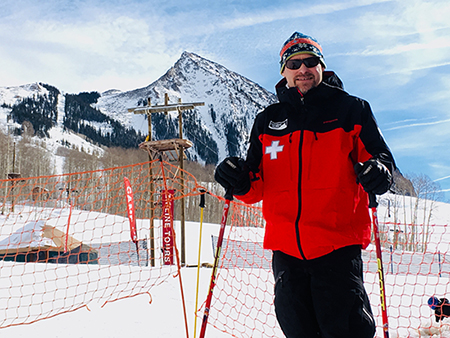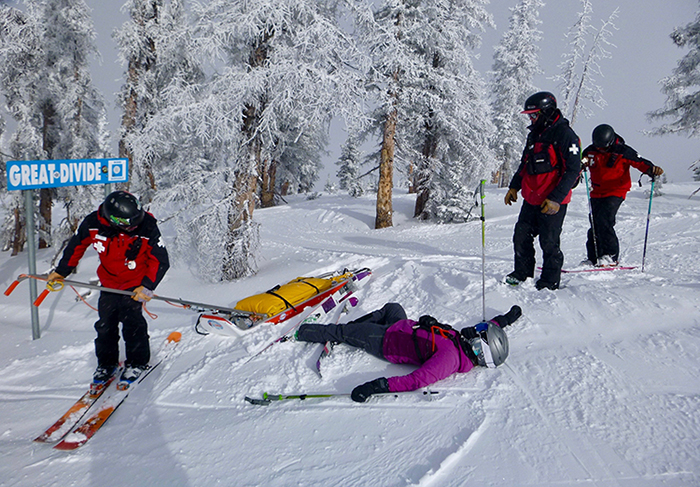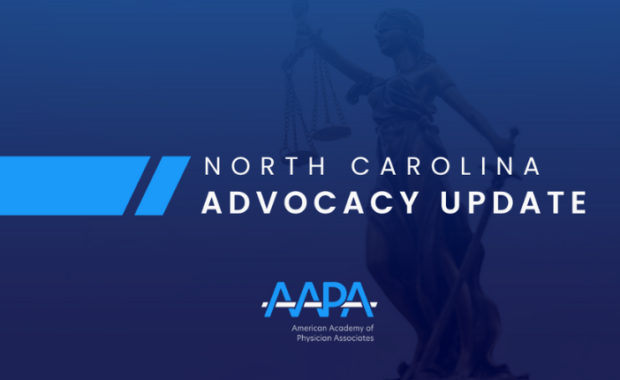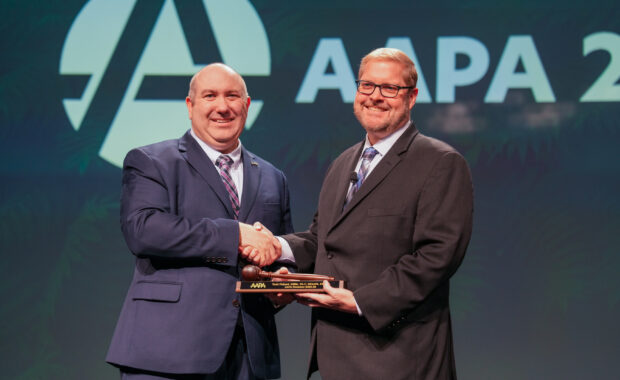Skis, Not Scrubs: PAs Serve Patients on the Slopes
PAs Moonlight as Ski Patrol
January 6, 2020
By Hillel Kuttler

About once every season, a skier sustains the most critical of injuries where PA Matt Wark works.
In “the worst case” Wark said he’s seen, he treated a young skier at the Crested Butte, Colorado, resort who sustained head and facial trauma after colliding with a tree. The resort’s ski patrol secured the skier to a toboggan to be transported down the mountain to the site’s clinic. There, Wark intubated the patient, who was airlifted to a level-2 trauma center in Grand Junction for surgery. A month later, the recovered patient returned to the clinic bearing homemade cookies in thanks.
“That’s part of why I keep my ER jobs,” Wark said of the three Colorado hospitals’ emergency departments where he works, in addition to his position at Crested Butte. “At the ER, I see a lot of patients and get to keep my skills up so that when bad stuff happens at the ski area, I’m ready for it.”
[Join us for AAPA 2020 in Nashville, Tennessee]
Wark is among several PAs working or volunteering for Colorado resorts’ ski patrols, clinics, or both. On ski patrols, their medical skills must be supplemented with an ability to traverse even the most challenging trails to reach skiers requiring assistance. In clinics, as in the emergency departments where PAs also work, they deal with quiet stretches interrupted by cases requiring immediate attention.
PAs stand out as medical professionals on ski patrol
Most ski-patrol personnel are not medical professionals, but they’re trained in first aid that’s supplemented by refresher sessions. Some PAs in ski patrols pitch in on safety-related matters like securing cushions to the bottom of ski-lift towers; roping off parts of trails, such as in forested areas, deemed dangerous; and even detonating explosives to stabilize areas by preempting possible snow avalanches.
“They don’t let me throw bombs quite yet,” Wark quipped of needing to attain certification in the latter task.
Some PAs’ work at the resorts continues even after ski season concludes. That’s because so many sites and their clinics remain open year-round, with warm-weather months drawing as many outdoors enthusiasts – for mountain biking, hiking, mountaineering and horseback riding – as do the snow-covered slopes.
“There’s something for everyone,” said Rachel Weinzimmer, president of the Colorado Academy of PAs.

Interest in wilderness medicine
Weinzimmer works in emergency medicine in the south-central Colorado town of Alamosa and has volunteered on Monarch Mountain’s ski patrol since 2016. Her ski-patrol position runs about 10 days a season, as Weinzimmer’s work schedule permits. She joined Monarch Mountain because of an interest in wilderness medicine – “to use my skills in a different way,” Weinzimmer said – and to learn about the community she’d just moved to. She happens to be very passionate about the slopes.
When not volunteering, Weinzimmer sometimes arrives at 6:30 a.m. to do uphill skiing. The activity provides “a pretty aerobic” workout, she said in an understatement. Using all-terrain bindings on her skis, Weinzimmer climbs perpendicular to the mountain, accomplishing in an hour-plus what takes five minutes on a ski lift.
[PAs in Wilderness Medicine Special Interest Group]
Going in the standard direction, downhill, Weinzimmer watches for prone skiers who may require assistance. Back in the medical building, she typically treats patients with knee, leg, and shoulder injuries following falls. Plenty arrive with altitude sickness, often visiting from out of state and unprepared to ski in the thin air at 11,000 feet.
ER cases similar to those from the slopes
“Everything you see in an ER, you see on the slopes,” said Robin Johnson, a PA who volunteers in Loveland’s ski patrol, west of Denver. “Every bone in the body can be broken, and skiers will figure out how to do it every once in a while.”
One of Weinzimmer’s patients performed stunts in a designated area, but landed awkwardly and dislocated his hip.
“That’s probably the worst [case] I’ve seen. Pretty painful,” she said.
Johnson once treated a young man who neither skied recklessly nor fell badly. Waiting to board a lift, he keeled over and went into cardiac arrest. Johnson administered CPR, but the man died.
“It was frustrating,” he said. “My thought is always: I want to be there to help them. Unfortunately, the cards were not stacked up for the poor guy.”
That was in about 1975, when Johnson worked at Monarch. Years later, Johnson, his wife and their son and daughter worked simultaneously with the ski patrol at Pikes Peak. (His son Chris is now a paid staff member of Beaver Creek’s ski patrol.)
After teaching high school for eight years, Johnson decided to become a PA. His physical education classes and role coaching the football team had confronted him with young people’s medical issues. He’d also worked as an emergency medical technician.
Johnson volunteers most weekends, making the two and a half-hour drive to Loveland on Fridays after working during the week at an internal medicine/family practice office and returning Sunday evenings.
Ski patrol enjoy camaraderie and helping people
“I like the fun, the camaraderie of the patrol, helping people,” he said.
Johnson and his Loveland colleagues train early each season. They toss rope over cables to practice evacuating skiers from broken lifts; play out scenarios involving reckless skiers slamming into others; and ski to an accident site trailing a toboggan, then head down a mountain with a faux-injured person while retaining control of the toboggan.
“You have to practice this stuff because it happens,” he said.
One of Wark’s fellow PAs at Crested Butte, Jeff Isaac, has been at it even longer than has Johnson.
Isaac first worked on a ski patrol in 1972. He’s spent much of his career in the ski industry. Now at Crested Butte, he’s based solely in the clinic, rather than on the trails. Experience offers a sharp distinction.
“In the ER, the floor is always flat, it’s always 72 degrees and you wear pajamas to work. Outside, the environment is always an issue, so you have to focus on keeping yourself safe. … It’s as much about stabilizing the scene as about stabilizing the patient,” he said, comparing the challenge to an EMT’s arrival at a vehicular-accident scene while remaining alert to traffic. It’s: Is it an emergency or not? That’s what I like about field medicine. You have to make decisions based on what you can see and feel. It’s a different world.”
Additional Resources
PA Julie Mueller Thrives in Antarctica
Olympic Skiers and Snowboarders Benefit from PA Care
Ortho PA Turns Soccer Passion into Profession
Hillel Kuttler is a freelance writer. Contact him at [email protected].
This article was originally published in December 2018.
Thank you for reading AAPA’s News Central
You have 2 articles left this month. Create a free account to read more stories, or become a member for more access to exclusive benefits! Already have an account? Log in.


